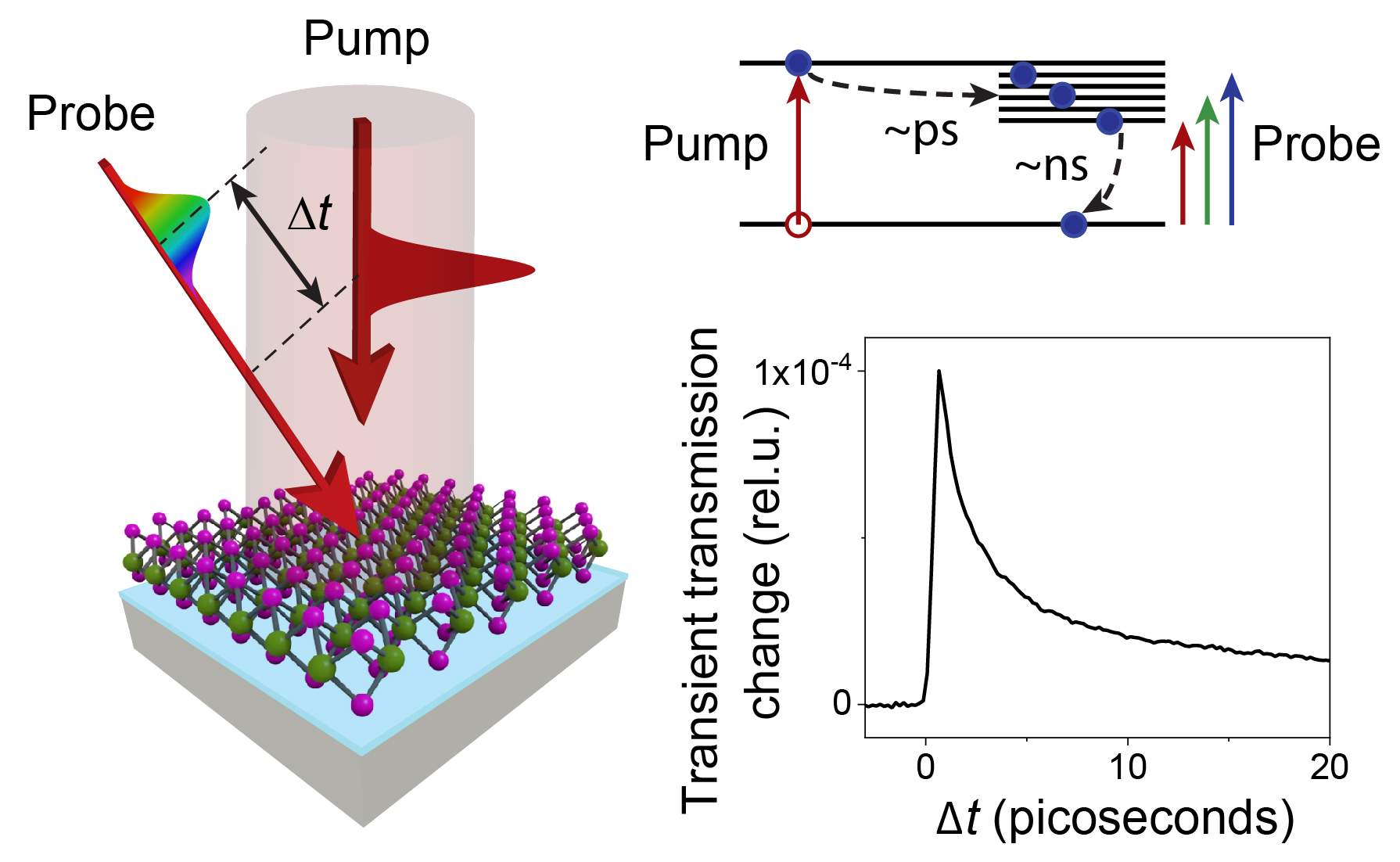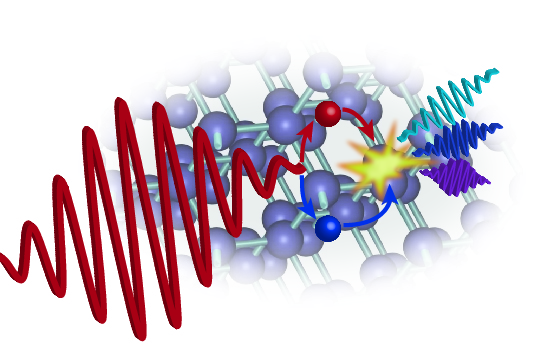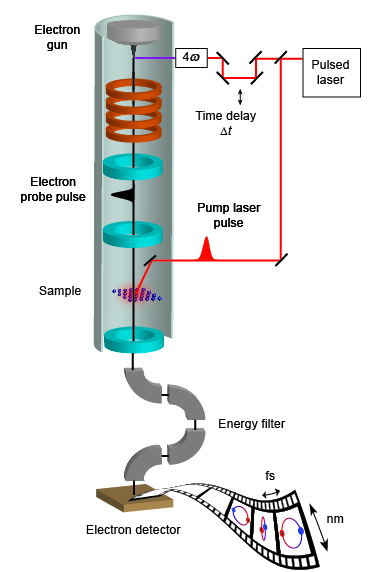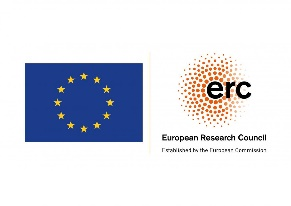Ultrafast phenomena in solids
Our long-term research goal is investigation of ultrafast phenomena in solids. The term „ultrafast“ is referring to processes occurring on time scales of femtoseconds to nanoseconds (10-15-10-9 s), which are related to the electronic dynamics or the dynamics of lattice vibrations in solids. These phenomena are studied using very short flashes of light (laser pulses) allowing both to trigger the studied dynamics in the investigated materials and to capture the state of the sample in a certain time after the excitation. Our interests are divided into the following categories:
Ultrafast phenomena in semiconductors and semiconductor nanostructures

The research and development of new semiconductor materials and their nanostructures is not currently possible without the detailed knowledge of the processes that take place on picosecond and femtosecond time scales. These include, for example, excitation of charge carriers, relaxation and recombination processes. Such rapid processes can only be investigated using special methods based on ultra-short laser pulses. Our division disposes of four laser labs with femtosecond laser systems (laser laboratory with ultrashort pulses and high-energy femtosecond laser laboratory). Our research is focused on ultrafast processes in semiconductors (e.g. diamond) and in semiconductor nanostructures (silicon nanocrystals, nanodiamond). We investigate them by methods of time-resolved spectroscopy (time-resolved photoluminescence, time-resolved transmission and reflection, laser-induced grating, etc.).
| Contact: | prof. RNDr. Petr Malý, DrSc. |
|---|---|
| doc. RNDr. František Trojánek, Ph.D. |
Attosecond processes and strong-field physics in solids
The speed of contemporary electronics is limited by the maximum operation frequency at which the macroscopic electric currents may be controlled and switched in silicon-based logic circuits. However, there are much faster phenomena, which could be potentially utilized to increase the speed of information processing and transfer by many orders of magnitude. We focus on investigation of such processes at our department by using ultrashort laser pulses with electric field amplitudes comparable or even stronger than the field acting between neighboring atoms in solids. Thanks to the attosecond (1 as = 10-18 s) precision of the waveform and phase control of the electromagnetic field of light, this technology allows us to study the coherent dynamics of electrons in solids and nanostructures, which is studied by high harmonic spectroscopy in the visible and ultraviolet spectral regions in our laser laboratory with ultrashort pulses.
| Contact: | RNDr. Martin Kozák, Ph.D. |
|---|

Ultrafast electron microscopy – interaction of photons with free electrons

Natural time and length scales of electron dynamics in atoms, molecules and solids, are hundreds of attoseconds (1 as=10-18 s) and nanometers (1 nm=10-9 m). In the time domain, the attosecond time resolution may be reached using ultrashort light pulses with the length of the period of electromagnetic field corresponding to few femtoseconds. However, the optical radiation does not provide sufficient spatial resolution for direct imaging of electrons and atoms in solids due to its wavelength of several hundred nanometers. This limitation is overcome in electron microscopy, which utilizes the beam of high energy electrons with de Broglie wavelength of few picometers. In our laboratory we combine the advantages of both these fields in the so-called ultrafast electron microscopy, where a short electron pulse generated by a femtosecond laser pulse in the electron gun of the microscope images the state of the sample in a certain time after the excitation by another optical pulse. We also focus on the fundamental research of the interaction between free electrons and light mediated by the ponderomotive potential of optical waves or by the optical near-fields of various nanostructures.
This topic was recently supported by the European Research Council, which selected the ERC Starting Grant eWaveShaper for funding. The project is focused on the research of the possibilities allowing to shape the electron wavefunction by light with high spatial and temporal resolutions, on the research of transfer of optical coherence by modulated electron beams and on the development of time domain electron holography in the new laboratory of ultrafast electron microscopy
We offer phd and postdoc positions in our group.
| Contact: | RNDr. Martin Kozák, Ph.D. |
|---|



